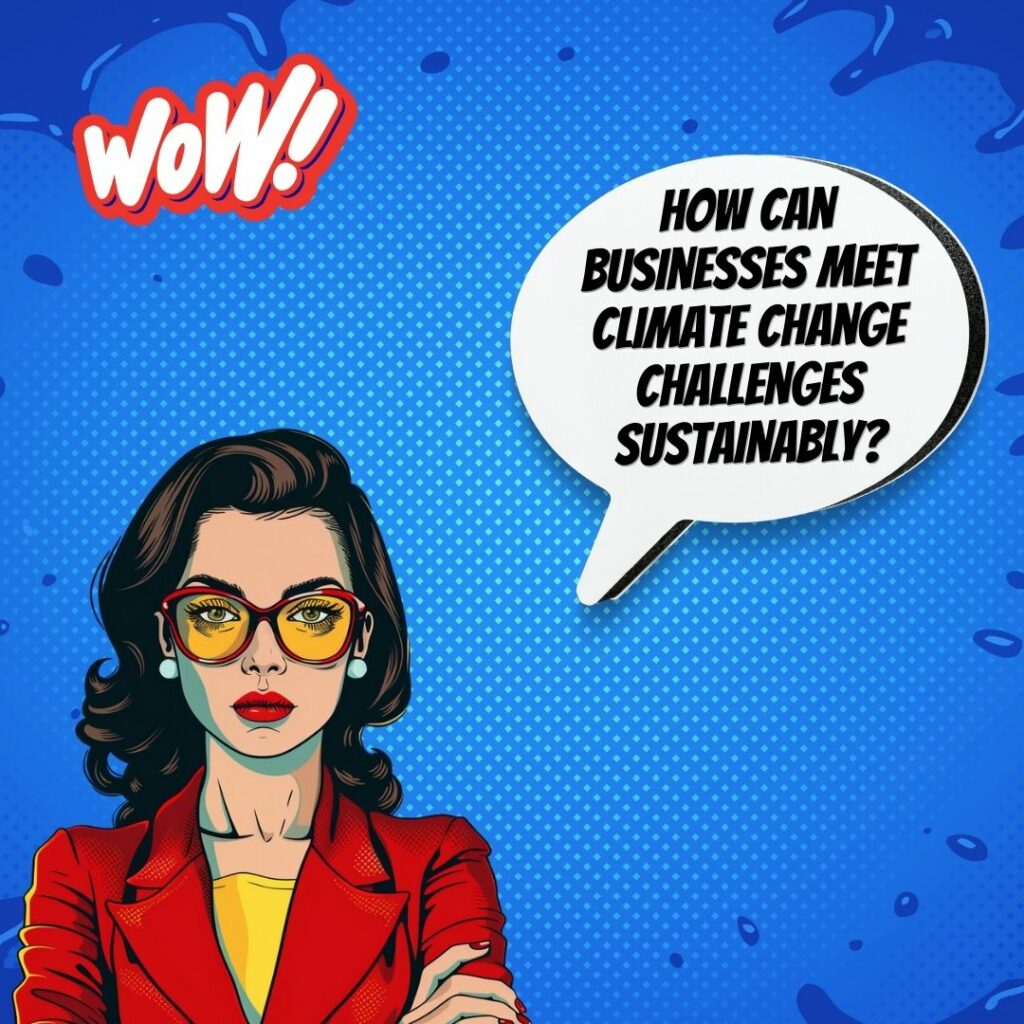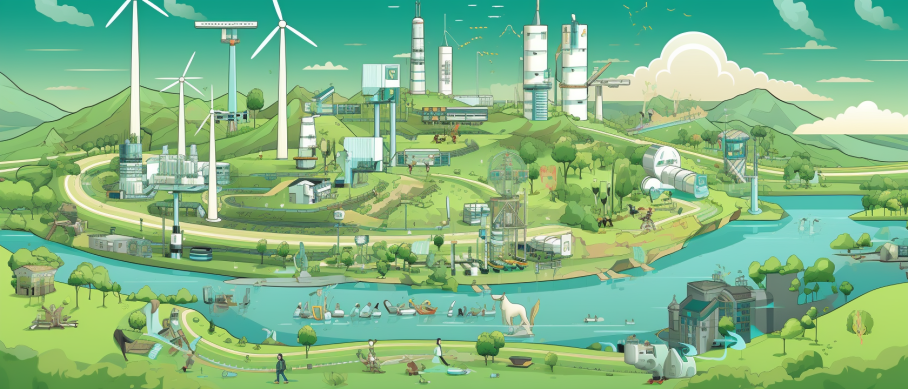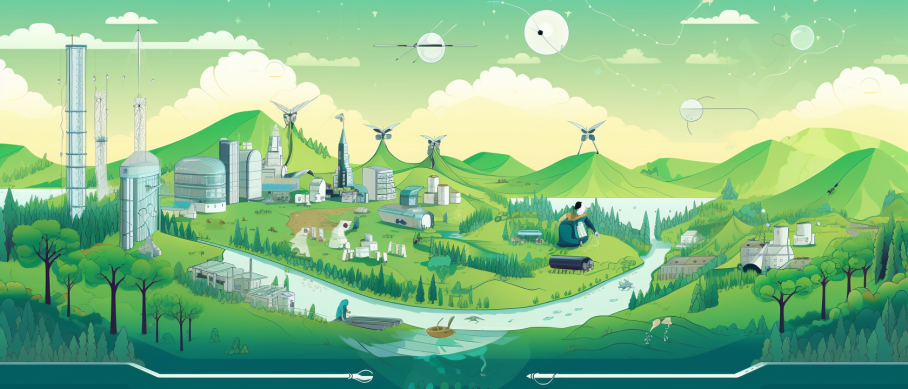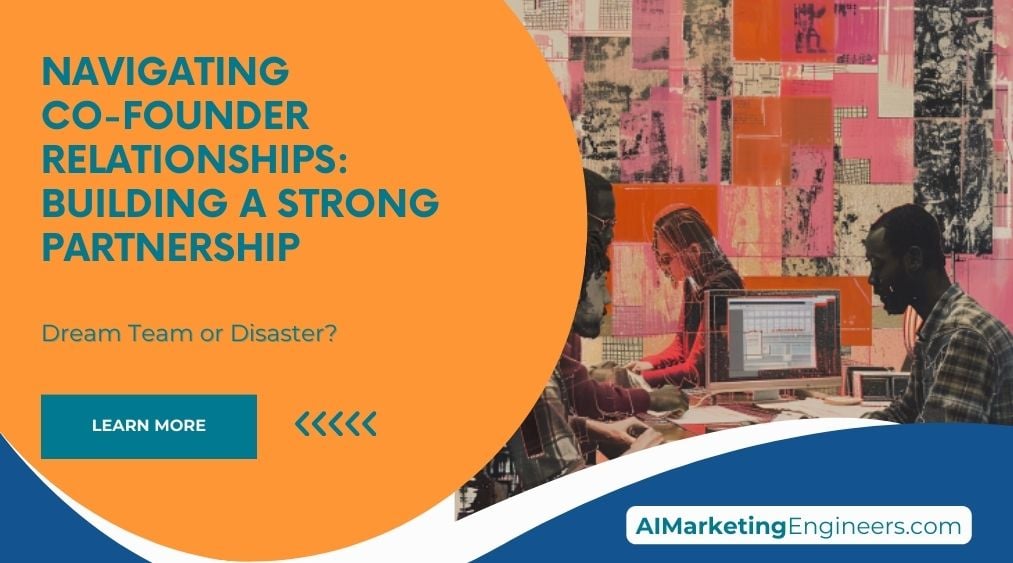Key Takeaways
✅ Integrate Climate Risks into Business Strategy: In a world heading rapidly towards decarbonization, businesses need to look ahead and weave climate risks into the very fabric of their business strategies. By evaluating threats within the supply chain, diversifying offerings, and investing in green technology, companies can not only shield themselves but also discover growth pathways. Surprisingly, while direct operations might seem the frontrunner in carbon footprint, Scope 3 carbon emissions from supply chains can dwarf this, underlining the need for an extensive strategy overhaul.
✅ Collaborate with Suppliers and Stakeholders: As the battle against carbon emissions intensifies, the value of partnerships has never been clearer. Engaging suppliers in carbon reduction efforts becomes a pivotal move, given that supply chain emissions can be up to eleven times more than those of direct operations. Teaming up with stakeholders - employees, customers, and fellow businesses - paves the road to not just standing up to scrutiny but thriving through innovation and cohesive carbon reduction plans.
✅ Adapt and Innovate for a Sustainable Future: The march towards sustainability is both a challenge and an opportunity. By adopting practices like responsible sourcing, switching to renewable energy, and slimming down their carbon footprint, businesses position themselves at the forefront of change. Moreover, exploring new technologies and collaborations can unlock doors to untapped opportunities, essential for staying competitive in a future where innovation dictates survival.
 Introduction
Introduction
Have you ever paused to consider how Sustainability in Business is not just a trend but a necessity, especially in the light of Meeting Climate Change Challenges? Today, with the planet sitting on the brink of major climate thresholds, the role businesses play can't be overstated. In the nexus of corporate world meets environmental preservation, sustainability emerges as both a shield and a spear - defending against future shocks and paving new growth avenues.
From these reflections rise a barrage of questions: How can companies transform climate risks into strategic victories? What does it take to not just adapt, but to thrive in this new green economy? This article unravels these queries, promising not mere observations but actionable wisdom. Through the lens of innovation, strategic foresight, and collaboration, we venture into an exploration aimed at equipping businesses to not just survive but flourish. Fasten your seatbelts for a ride into the future of enterprise, where sustainability and success go hand in hand, delivering not only enhanced ROI but also a planet that's habitable and a business landscape that's fertile for unparalleled growth.
The Impact of Climate Change on Business
Climate change isn't just a headline or a distant forecast anymore; it's a present-day challenge affecting businesses around the globe. Rising temperatures, severe weather events, and shifting climate patterns are no longer anomalies. They disrupt supply chains, damage infrastructure, and even alter consumer behavior. On top of this, governments around the world are rolling out stricter regulations to combat climate change, pushing companies to adapt quickly or face hefty costs. This reality check brings a critical question to the boardroom: How can businesses thrive in a world where the only constant is the changing climate?
Strategic Response to Climate Change
Responding to climate change requires more than just goodwill; it demands a strategic and proactive approach. Companies are finding that reducing emissions isn't just about being 'green'; it’s about being economically savvy. Investing in renewable energy, improving energy efficiency, and rethinking business models can significantly reduce operational costs. Meanwhile, engaging with policymakers and staying ahead of regulatory changes can mitigate risks. And there’s a silver lining: change breeds opportunity. Innovating new products, penetrating untapped markets, and forging collaborations can drive businesses forward. Are companies ready to transform challenges into growth engines?
Decarbonization and Net-Zero Emissions
Decarbonizing the world’s most polluting industries, such as steel and cement, is no small feat. Achieving net-zero emissions—a balance between the greenhouse gases put into the atmosphere and those taken out—requires groundbreaking investments in clean technology. The price tag? A staggering $60 trillion over the next 30 years. This isn’t just an expenditure; it’s an investment in a sustainable future. The transition offers an opportunity for businesses to lead in the development and adoption of green technologies. But with such high stakes, one must ask: Who is ready to foot the bill and innovate for a greener tomorrow?
Collaboration and Collective Action
No single business, industry, or country can tackle climate change alone. Collaboration is the cornerstone of an effective response to climate challenges. By joining forces, companies can share the burden of investment, innovate at scale, and shape regulations that support sustainable growth. Collective action extends beyond industry borders, requiring partnerships with governments to ensure supportive policies and frameworks. This collaborative spirit could be the key to unlocking new technologies and markets. But it raises a crucial question: Are businesses ready to put competition aside for the greater good?
The Business Case for Sustainability
Sustainability has moved from the sidelines to the core of strategic business planning. This dramatic shift is driven by the realization that addressing climate change is not just an ethical duty but a business necessity. Companies that proactively engage with sustainability by reducing emissions, preparing for upcoming regulations, and seizing new opportunities will not only survive but thrive. The question for businesses is no longer if they should invest in sustainability, but how quickly they can adapt to this new business imperative. Will your company lead, follow, or be left behind in the sustainable revolution?
AI Marketing Engineers Recommendation
Recommendation 1: Integrate Sustainable Practices Across Your Value Chain: One of the most impactful actions a company can take is to ensure sustainability is not just a sideline effort but woven into every aspect of its operation. From sourcing materials responsibly to optimizing logistics for lower carbon emissions, every step counts. As of 2023, a growing number of consumers (reported by a Nielsen study) are willing to pay more for products from companies committed to positive social and environmental impact. This shift means integrating sustainability can also drive financial performance, turning green practices into a competitive advantage.
Recommendation 2: Leverage Data for Smarter Sustainable Decisions: With the rise of Big Data and advanced analytics, businesses have unprecedented opportunities to track their environmental impact in real-time. This data can inform smarter decisions that align with sustainability goals. Current trends show a marked increase in the use of IoT sensors and AI to monitor and reduce energy usage within manufacturing processes, significantly lowering carbon footprints. This strategic insight not only aids in meeting climate change challenges but can also lead to cost savings through improved efficiency.
Recommendation 3: Adopt Circular Economy Principles: Moving away from the traditional linear economy model of 'take-make-dispose,' to a circular one where resources are reused and recycled, can markedly reduce waste and environmental impact. Practical tools like the Ellen MacArthur Foundation's Circulytics can help businesses assess their circularity level and identify areas for improvement. Benefits of adopting these principles include reduced material costs, innovation opportunities, and enhanced customer loyalty through demonstrating commitment to sustainability. As per recent reports, companies that have adopted circular economy practices have seen not only environmental but also substantial economic benefits, underscoring the relevance of this approach in today’s climate-conscious market.
Conclusion
As we've ventured through the crucial topic of Sustainability in Business: Meeting Climate Change Challenges, it's clear that this isn't just another trend. It reflects a fundamental shift in how companies operate in our warming world. Reflecting on the initial discussion around the introduction to sustainability in business, it's evident that sustainability has transitioned from a nice-to-have to a core component of long-term business strategy. The reason? The undeniable impact of climate change on business, which ranges from disrupted supply chains to regulatory challenges and shifting consumer demands.
Adopting a strategic response to climate change isn't just about survival; it's about seizing a competitive edge. Companies that lead in reducing emissions, gearing up for upcoming regulations, and innovating in new products or markets are setting themselves up for future success. Moreover, the monumental task of decarbonization and achieving net-zero emissions underscores the urgency and the scale of investment needed – a staggering estimated $60 trillion over the next three decades. Yet, this investment isn't just a cost; it's an investment in a company’s resilience and in opening new avenues for growth.
The narrative around collaboration and collective action brings a beacon of hope. No single company can weather the storm of climate change on its own. Pooling knowledge, resources, and innovations across industries can pave the way for pioneering solutions that not only mitigate environmental impact but also propel businesses forward.
In essence, making a business case for sustainability is no longer about if or when; it's about how fast and how effectively. Sustainability in business is a strategic imperative that calls for immediate action and innovation. Companies at the forefront of this movement will not only help steer us towards a more sustainable future but will also elevate their market standing, proving that facing the challenges of climate conducted with foresight and unity is not just good for the planet—it's good for business too. Let this be a call to action: the time to adapt, innovate, and collaborate is now.
FAQs
Question 1: What are the main social, environmental, and economic challenges and opportunities in your company?
Answer: We look at the biggest impacts we can make or face, including how we can positively or negatively affect our finances, operations, product safety, and protect the environment.
Question 2: Does your company have a formal sustainability program?
Answer: Yes, we can tell you how we define sustainability, see it in action, and make sure it fits into our big-picture plans.
Question 3: What role does sustainability play in your company’s overall strategic plan?
Answer: It's key! It ties into our culture, mission, and direction, making sure it’s essential, not optional.
Question 4: What are the objectives and targets of your sustainability efforts, and what progress has been made in meeting your goals?
Answer: We set clear goals that matter in every part of our business, show measurable progress, and keep updating you on how well we're doing.
Question 5: How does sustainability align with your business goals?
Answer: Our sustainability strategy gets along with our business goals, takes care of people, planet, and profit, and has the top bosses' backing.
Question 6: What is your willingness to invest in sustainability?
Answer: We're ready to roll, getting the right team, doing our homework, and putting resources where they need to be for real change.
Question 7: How do you engage your employees in your sustainability efforts?
Answer: Through regular talks, updates, and encouraging them to be a part of the change with incentives.
Question 8: How do you compare to competition?
Answer: We keep an eye on what others are doing, making sure we're in a strong position and always looking for ways to do better.
Question 9: How are you measuring progress?
Answer: We've got solid ways to see how effective our plans are—looking at the cost of energy and the returns we get from going green.
Academic References
- Geissdoerfer, M., Savaget, P., Bocken, N. M., & Hultink, E. J. (2017). The Circular Economy – A new sustainability paradigm? Journal of Cleaner Production, 143, 757-768. This in-depth publication introduces the circular economy as a seminal concept in sustainability, illustrating its effectiveness in minimizing waste and reducing emissions, paving the way for a more sustainable future.
- Larsen, R. K. Social Cohesion and Sustainability: Developing a Framework for Progress. Journal of Sustainability, date and issue number not specified. Larsen's theoretical exploration delves into the pivotal role that social cohesion plays in achieving sustainable development goals, providing a robust framework for measuring and enhancing social bonds within communities for sustainability.
- Carr, G., Loucks, D. P., & Blöschl, G. (2018). Evaluating Interdisciplinary Research and Education Programmes: Framework, Methods, and Implementation Insights. Advances in Interdisciplinary Research, 2(3), 185-203. This piece offers a comprehensive framework for the evaluation of interdisciplinary research, specifically in the realm of sustainability, highlighting the importance of collaborative approaches in addressing complex sustainability challenges.
- Freeth, R., & Caniglia, G. (2019). Engaging with Collaboration: A Review of Interdisciplinary Research in Sustainability Science. Environment, Systems and Decisions, 39, 23-35. Freeth and Caniglia examine the critical importance and benefits of collaborative, interdisciplinary research efforts in sustainability studies, underscoring the development of innovative solutions to complex environmental issues.
- Eccles, R. G., & Serafeim, G. (2013). The Performance Frontier: Innovating for a Sustainable Strategy. Harvard Business Review, 91(5), 50-60. This insightful article discusses innovative strategies for sustainable business practices that do not compromise on performance, presenting a model for businesses aiming to thrive while embracing sustainability.
- Porter, M. E., & Kramer, M. R. (2011). Creating Shared Value: How to Reinvent Capitalism—and Unleash a Wave of Innovation and Growth. Harvard Business Review, 89(1/2), 62-77. Here, Porter and Kramer introduce the concept of creating shared value by aligning business success with advancing social and environmental conditions, proposing a transformative approach to capitalism.
- Carroll, A. B., & Shabana, K. M. (2010). The Business Case for Corporate Social Responsibility: A Review of Concepts, Research and Practice. International Journal of Management Reviews, 12(1), 85-105. This review explores the multifaceted benefits of corporate social responsibility for businesses and the larger society, highlighting its significance in today’s business landscape.
- Kopnina, H., & Blewitt, J. (2018). Sustainable Business Models: Innovation, Implementation and Success. Palgrave Macmillan. Kopnina and Blewitt offer a comprehensive overview of the principles and practices behind successful sustainable business models, examining key areas such as globalization and ethics within the context of sustainability.
- Roorda, N. (2020). From Challenges to Opportunities: Towards a Sustainable Future. Journal of Cleaner Production, 256, 120472. In this publication, Roorda discusses innovative approaches to sustainable business practices, offering insights into how these practices align with broader goals of sustainable development for a viable future.












